Once you have defined an object, 3ds Max evaluates changes affecting the base object and displays the result in the scene. What these changes are, and the order in which they are evaluated, is called the object data flow.
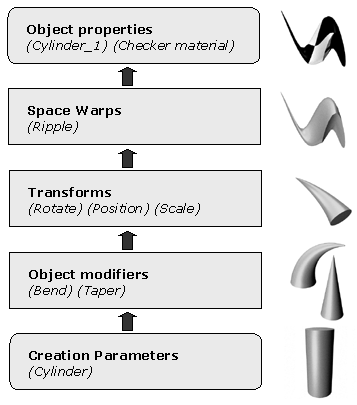
Diagram of data flow
Master object refers to an object defined by a set of creation parameters and the original position and orientation of its pivot point. You never see the master object. What you see in the viewport is always the result of at least the following data flow:
Master Object -> Object Transforms -> Object Properties

Object creation parameters in the Modify panel and Track View
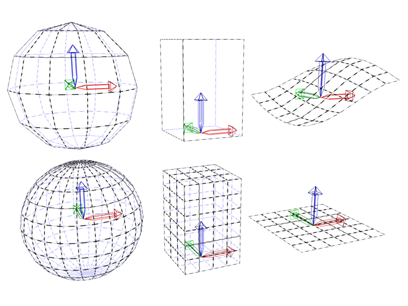
An example of master objects with different creation parameters.
The object-space modifiers are the next group evaluated in the data flow. Each modifier is evaluated in the order it was placed on the modifier stack. The modifications all occur in the object’s object space and the result is called the modified object.
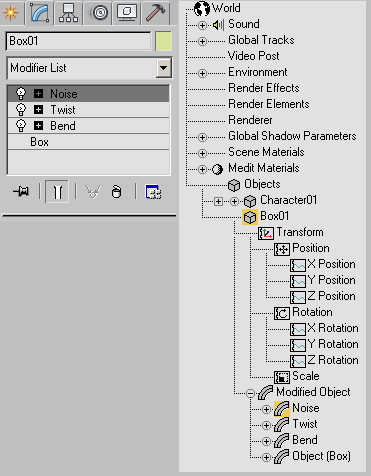
Object modifiers in the Modify panel and Track View
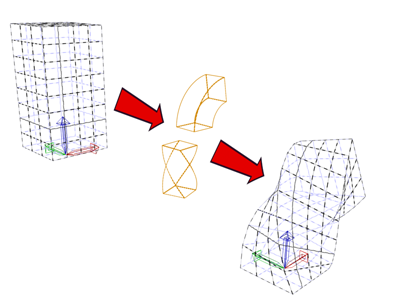
The effect of modifiers on a master object.
Once the modified object has been evaluated, it is transformed within the world coordinate system. Transforms cover the position, rotation, and scale changes applied from the transform buttons on the toolbar.
The method of evaluating all modifiers first and then evaluating the combined transforms has ramifications for the way you work with 3ds Max. The effect of transforms is independent of the order in which they are applied. The order in which you apply modifiers, on the other hand, does affect the resulting geometry. If you want to apply a transform that is evaluated in a specific order in the modifier stack, use the XForm modifier.
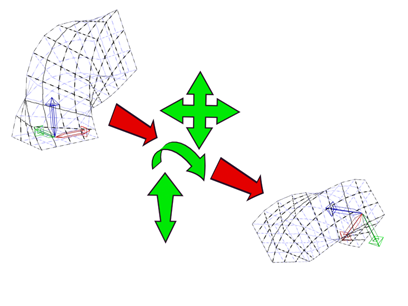
Transforming a modified object
Space warps are evaluated after transforms. They distort objects bound to the space warp based on the position of the object in world space. For example, a Wave space warp causes the surface of an object to undulate in the form of a wave. As the object or the space warp moves through world space, the waves move across the object’s surface.
Like space warps, world-space modifiers are evaluated after transforms. A world-space modifier is like a space warp bound to a single object.
Object properties are the last to be evaluated before the object is displayed. These are values specific to an object such as its name or settings you specify on the Object Properties dialog, such as shadow-casting properties; and materials you have applied to the object.
This is the end of the data flow, and the result is the named object you see in your scene.
Right-click an object and choose Properties to display its Object Properties dialog.

Object Properties affect the look of an object's rendered output.